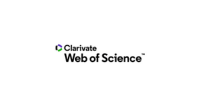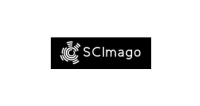BEZERRAS DE CORTE INFECTADAS NATURALMENTE COM PARASITAS GASTRINTESTINAIS EPIDEMIOLOGIA E TRATAMENTO SELETIVO
DOI:
https://doi.org/10.5380/avs.v10i1.4083Palavras-chave:
terneiras, parasitas, tratamento seletivo, antiparasitário, heifers, parasites, selective treatment, antiparasitic drug.Resumo
A severidade das infecções parasitárias depende em grande parte da quantidade e do tipo de parasita presente e do estado nutricional dos animais. O objetivo deste experimento foi associar o efeito da suplementação protéica e pastagem de alta qualidade com diferenças na resposta ao desafio parasitário em 36 novilhas de oito meses, naturalmente infectadas, durante 120 dias. Grupo I: pastagem (Avena strigosa e Lolium multiflorum); Grupo II: pastagem e níveis crescentes de suplemento (Triticum aestivum, farelo de trigo) de 0,3 a 1,5% do peso vivo (PV); Grupo III: pastagem e suplemento a 0,9% do PV e Grupo IV: pastagem e níveis decrescentes de suplemento. O grau de infecção parasitária foi determinado através da contagem de ovos por grama de fezes (OPG) e coprocultura. Animais com OPG acima de 600 foram tratados com levamisole (Ripercol®, Fort Dodge). A coprocultura revelou os gêneros Cooperia spp. e Trichostrongylus spp. O ganho de peso, o escore corporal e o nível parasitário foi semelhante entre os grupos. Foram administradas 24 doses de anti-helmíntico com baixo grau de repetibilidade dos animais. Determinou-se que o tratamento seletivo pode ser aplicado quando os animais dispõem de pastagem de alta qualidade e com baixo desafio parasitário, independente de suplementação alimentar.
Naturally infected beef heifers with gastrintestinal parasites epidemiology and selective treatment
Abstract
The severity of parasite infections depends in part by the number and the parasite species as well as on the nutritional status of the host. The objective of this work was to determine the association between protein supplement and good quality pasture with parasite challenge infection in 36 naturally infected, 8 months old beef heifers during 120 days. Group I: pasture (Avena strigosa and Lolium multiflorum); Group II: pasture plus increasing levels of supplement (Triticum aestivum, wheat bran) from 0.3 to 1.5% of live weight (LW); Group III: pasture plus 0.9% LW of supplement; Group IV: pasture plus decreasing levels of supplement. Parasite infection was determined through fecal egg counts (EPG) and coproculture. All animals with EPG above 600 were treated with levamisole (Ripercol®, Fort Dodge). Coproculture displayed Cooperia sp. and Trichostrongylus sp. Weight gain, body condition score and parasite levels were similar among all groups. Twenty-four doses of the anthelmintic were administered with low animal repeatability. It was determined that the selective treatment may be used when animals have access to good quality pasture and a low parasite challenge, independently of the supplement offered.
Downloads
Publicado
Como Citar
Edição
Seção
Licença
Autores que publicam nesta revista concordam com os seguintes termos:
- Autores mantém os direitos autorais e concedem à revista o direito de primeira publicação, com o trabalho simultaneamente licenciado sob a Creative Commons - Atribuição 4.0 Internacional que permite o compartilhamento do trabalho com reconhecimento da autoria e publicação inicial nesta revista.
- Autores têm autorização para assumir contratos adicionais separadamente, para distribuição não-exclusiva da versão do trabalho publicada nesta revista (ex.: publicar em repositório institucional ou como capítulo de livro), com reconhecimento de autoria e publicação inicial nesta revista.
- Autores têm permissão e são estimulados a publicar e distribuir seu trabalho online (ex.: em repositórios institucionais ou na sua página pessoal) a qualquer ponto antes ou durante o processo editorial, já que isso pode gerar alterações produtivas, bem como aumentar o impacto e a citação do trabalho publicado.













